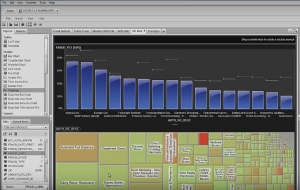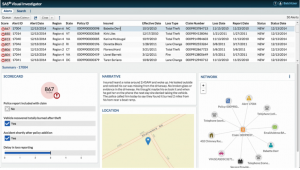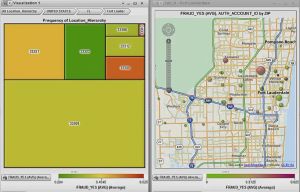From national security agencies, law enforcement organizations looking to terrorism and criminal activities, internal security, audit and compliance departments, to hospitals and public health organizations guarding against disease outbreaks, there are many common needs and constant challenges, e.g.:
- Detect an event of interest in the early stages.
- Investigate suspicious events fast and accurate.
- Reduce false positives.
- Take action and prevent negative consequences.
- More over, predict a harmful event and stop it before happens.
Several factors relate to combating these challenges:
- The vast amount of data to analyze.
- The data quality perspectives in matter of data cleansing, standardization and completeness.
- The complexity to analyze tones of data variables and macroeconomic or other external factors.
- The cost of an investigation process in matter of time, resources and expenses.
- The lack of technology adoption.
- Old design approach for analytics and investigation processes in separate silos.
- Several times data privacy and personal data constraints.
What we have to gain by tackling these challenges?
The daily challenge of security, audit, compliance, risk and fraud management departments is to utilize and combine all available data, produce intelligent decisions for their focus areas and identify events for further analysis and investigation. Time is crucial, experienced resources are limited, existing technology infrastructure not capable to handle even the basic needs, services provided and support from other departments is a time consuming process and has to be scheduled and requested far before.
However organizations and the public have to gain a lot if they harness these challenging factors: avoid downstream operation bottlenecks, identify incidents of interest, uncover fraud and other suspicious patterns, receive alerts and take actions immediately, reduce company risk, prevent crime breakouts, limit financial exposures, secure an efficient audit and compliance process, setup a second line of defense in citizen health and safety.
The solution: an Intelligent Analyst with Visual Investigation capabilities
Due to these needs and challenges a new role is emerging, the role of the Intelligence Analyst. The Intelligence Analyst is someone who uses analytics artifacts that might be generated through available data and analytics processes used to perform an investigation (data management, data cleansing, business rules, anomaly detection, watch lists matching, predictive modeling, text mining, advanced data visualizations, geomaps and geocoding, social network analysis etc.).

The Intelligence Analyst should be able to combine instantly all available data in a visual canvas, identify entity links (e.g. insiders and vendor/suppliers collusion, anomalies in social media behavior in a specific area or citizen origin country, anomalies in a decease outbreak in an area or hospital or specific citizen segment), identify policy breaches (HR policies, procurement and accounting policies, security policies etc.), identify compliance violation incidents and not only. The Intelligence Analyst should be able to build cases based on the analytics artifacts and trigger investigation processes via a workflow engine that will document and control any further action, fact or evidence, up to the closure of the case.
The Technology
SAS provides a modular, scalable solution for visual investigation, capable to boost the efficiency and effectiveness of an Intelligent Analyst in 0 time. SAS solution consists of an investigation and incident management platform that combines large, disparate, structured and unstructured data sources. Users can define, create, triage and manage alerts, perform detailed investigations, and customize the platform to meet their individual and organizational needs.

If your organization needs to uncover hidden behaviors and activities, identify in a timely manner incidents of interest and even prevent bad incidents to happen, with SAS technology you can perform deep investigations and share them across your organization for optimal team coordination.

Providing the full power of SAS advanced analytics and machine learning, SAS solution has an interactive interface to conduct visual and directed investigations. This self-service approach can reach through-out your organization so that users can perform any number of activities, such as simple data import, point-and-click exploratory analysis, access to third-party systems, match and correlate incidents from connected entities, apply risk score per event, visualize a network diagram with connected individuals or other, group similar events and analyze behavioral patterns, uncover hidden insights and anomalies consolidated to specific elements or factors, produce analytic scenarios, case files and many more.
More diligent, effective suspicious incident detection methods can actually satisfy regulatory requirements, achieve high efficiency in audit and compliance processes, reduce company risk, better managing and minimizing fraud, assist the most in public health, safety and security.

